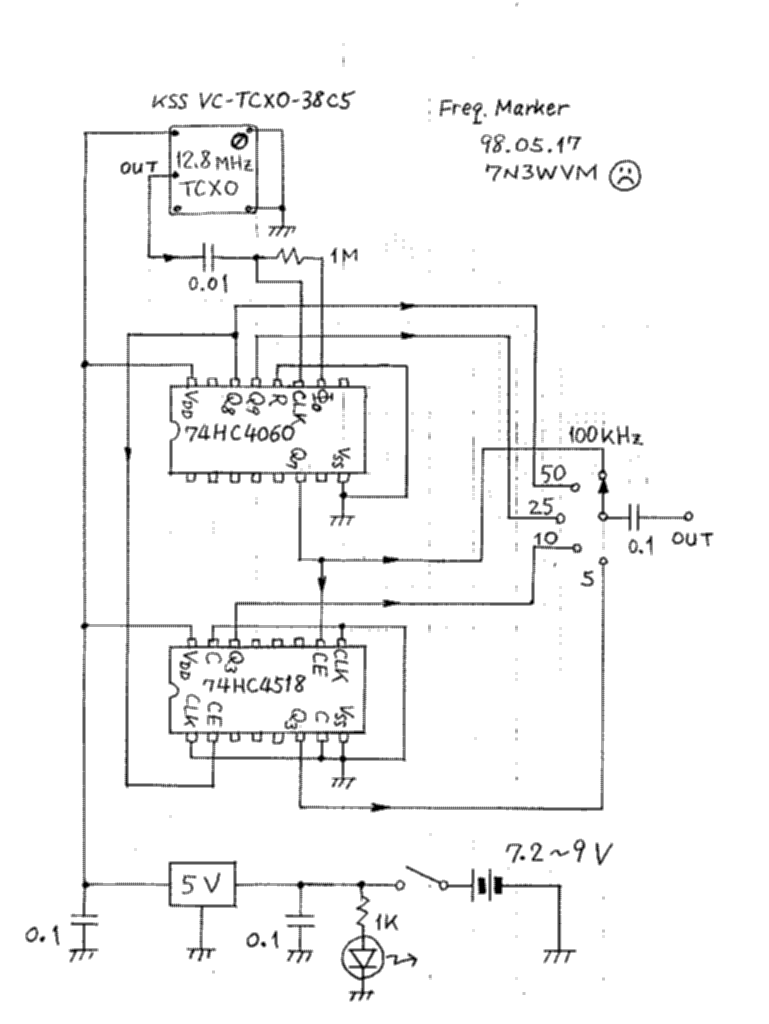
Precision Frequency Marker
Recently, cheap TCXO modules with a frequency of 12.8MHz are on the surplus market(at least in Japan). TCXO stands for Temperature Compensated X'tal Oscillator. It is a fine-tunable oscillator module packed in a small can with an excellent frequency stability against ambient temperature change.
As you see in the schematic diagram, the 12.8MHz clock signal from the TCXO is divided by 128 with a binary counter 74HC4060 to make a 100kHz clock. Then, further divided by two and another two to make clock signals of 50kHz and 25kHz. The 100kHz and 50kHz clocks are again divided by ten with a BCD counter 74HC4518 to make clocks of 10kHz and 5kHz, respectively.
At first, select 100kHz and zero-in with the standard frequency of e.g. WWV by tuning the trim-pot of TCXO, then you have a self-maintained precision frequency marker for your homebrew rigs. If you select 100kHz clock for instance, then you hear the maker beat signals every 100kHz with your receiver.
MINOWA, Makoto
7N3WVM
Last revised 1998-06-05.